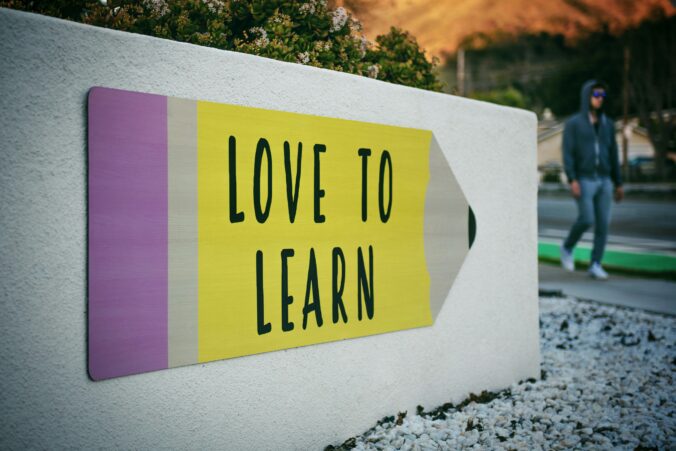Feature Photo by Tim Mossholder on Unsplash
What is Universal Design for Learning (UDL)?
Universal Design for Learning (UDL) is an educational framework designed to make teaching methods and materials more flexible and accessible to all students. Instead of the traditional “one-size-fits-all” approach, UDL provides multiple ways to engage students, present information, and allow students to express what they have learned. This flexibility is essential in accommodating different learning needs, whether due to disabilities, varying teaching styles, or personal preferences.
As I reflect on my own experiences in the learning environment, I have noticed how rigid teaching methods can exclude students who struggle with traditional lectures or standardized tests. For example, some of my peers grasp concepts more effectively through practical activities or visual aids rather than long text-based explanations. UDL helps address such inequalities by integrating multiple forms of content delivery, ensuring that all students have equal opportunities to succeed.
UDL in Physical and Digital Classrooms
In physical classrooms: Teachers can provide diverse content representations—such as charts, hands-on activities, or group discussions—to accommodate different learning styles. Flexible seating, access to assistive technology, and hands-on learning experiences can also enhance inclusion.

In digital classrooms: The online learning environment should be designed with accessibility in mind. This includes ensuring that videos have captions, using screen-reader-friendly materials, and allowing students to demonstrate their learning in different formats (e.g., written assignments, video presentations, or infographics).
Ensuring Accessibility in Online Settings
To ensure access to a digital teaching environment, careful planning and the use of equipment that supports diverse students are essential. Some key elements include:
Accessibility

- Videos should include captions and transcripts.
- Images should have alternative text for screen readers.
- Documents should be formatted for easy readability (e.g., using clear fonts, structured headings, and high-contrast colors).
User-Friendly Platforms
- Online learning platforms should be intuitive and accessible for students with varying levels of technical skills.
- Features such as text-to-speech options and adjustable text sizes can enhance accessibility.
Flexible Learning Options
- Providing alternative ways to complete assignments, such as allowing students to submit videos instead of written papers.
- Offering extra time for assignments or exams to accommodate different processing speeds.
Inclusive Design from the Start
- Instead of adding accessibility features later, courses should be designed with inclusion as a priority.
- Regularly testing digital content with accessibility tools and guidelines, such as the Web Content Accessibility Guidelines (WCAG), ensures that all materials are usable for diverse learners.
Personal Reflection
As a student, I have encountered situations where inaccessible content made learning difficult. For example, some online course materials lacked proper formatting, making them challenging to navigate and understand. However, courses that included captions, interactive elements, and multiple content formats were much more engaging and effective.
Ethical Challenges of EdTech:
Educational Technology (EdTech) has transformed the way we learn, offering interactive tools, personalized learning experiences, and greater accessibility. However, along with these benefits, EdTech also raises several ethical concerns that educators and institutions must address.
Key Ethical Issues in EdTech
- Privacy and Data Security
Many EdTech tools collect vast amounts of student data, including personal information, behavioral patterns, and learning habits. Without proper security measures, this data can be misused or become vulnerable to security breaches.
- Example: Some learning management systems track students’ time spent on tasks, raising concerns about surveillance and academic pressure.
2. Big Data and Student Tracking
While analytics can help teachers understand student progress, excessive data collection can infringe on privacy. Moreover, algorithms that analyze learning behaviors may reinforce biases if they are not designed ethically.
3. Equity and Accessibility
Not all students have equal access to technology, leading to a digital divide between those with reliable internet and devices and those without.
- Example: Some students rely on school-provided laptops, while others may lack a stable internet connection at home, affecting their ability to complete assignments.
4. Algorithm Bias and Automation

Machine learning algorithms used in EdTech tools can unintentionally reinforce biases, leading to unfair assessments or unequal learning opportunities. If these systems are not carefully designed and monitored, they can disadvantage certain groups of students.
Ethical Considerations in Digital Interactions
Whether in a learning or social environment, digital interactions require ethical awareness to foster respectful and inclusive online communities. The following is a video on digital ethics:
Key Ethical Responsibilities in Online Environments
1. Respect and Kindness
Just like face-to-face communication, it is essential to be respectful in online discussions. This means avoiding cyberbullying, harassment, and the spread of misinformation.
- Example: In online class forums, acknowledging and considering different perspectives fosters a positive learning environment.
2. Confidentiality and Digital Footprint
Everything shared online leaves a permanent digital footprint. Being mindful of the information shared—especially personal details—is crucial.
- Example: Posting a classmate’s work or discussions without their consent can violate privacy.
3. Academic Integrity
Maintaining honesty in digital learning environments is essential. This includes avoiding plagiarism, citing sources properly, and using AI-generated responses responsibly by engaging with and understanding the material.
4. Inclusion and Accessibility
Online spaces should be welcoming to everyone. This involves using inclusive language, considering diverse perspectives, and ensuring digital content is accessible (e.g., adding captions to videos).
How to Foster Respectful, Inclusive, and Ethical Digital Interactions
- Think before posting: Before sharing anything online, consider whether it is respectful, necessary, and ethical.
- Respect others’ privacy: Avoid sharing screenshots, messages, or digital materials from private conversations without permission.
- Be mindful of tone and wording: Written communication can be easily misinterpreted, so it is important to use clear and respectful language.
Applying UDL and Accessibility Principles

One of the best learning environments I experienced was an interactive online course that provided multiple ways to engage with the material, including videos with captions, text-based content, and interactive quizzes. This approach aligned with UDL’s multiple means of representation principle, making the material accessible to students with different learning preferences. However, in other courses, I encountered challenges such as unstructured lessons, missing captions, and inaccessible PDFs, which made learning difficult for some students.
Reflections on My Own Teaching Contributions
Although I was not an instructor, I created instructional materials and helped friends with their courses. When explaining concepts, I often used charts, real-life examples, and verbal explanations, which naturally aligned with UDL principles. When designing H5P-based teaching materials, I incorporated interactive elements to engage students. However, I recognize that I could further improve accessibility by ensuring my content includes alt text, screen-reader-friendly text, and flexible response options.
Ways to Improve Accessibility
To create a more inclusive learning environment, educators should:
- Provide flexible material formats – Use a combination of videos, text, and interactive elements to support different learning styles.
- Ensure digital accessibility – Add alternative text for images, include captions for videos, and ensure screen-reader compatibility for all learning materials.
- Offer alternative assessments – Allow students to demonstrate their learning through written, oral, or visual formats instead of relying on a single rigid method.


